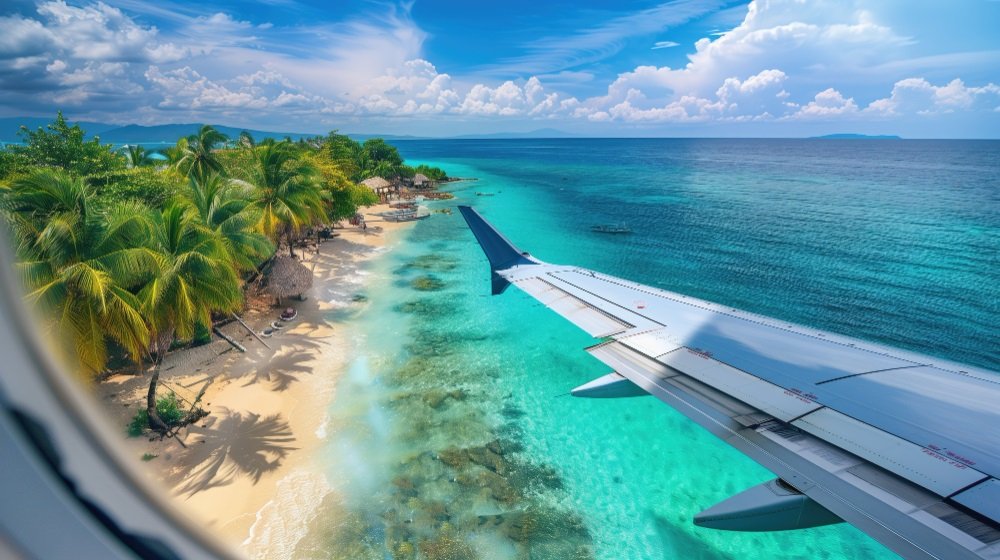Planning a trip to the Hawaiian islands is an exciting endeavor, but choosing the right time to visit can significantly impact your experience. Hawaii’s tropical climate offers year-round warmth, but each season brings its own unique weather patterns, attractions, and crowds.
Get ultimate traveler plannerBest Time to Visit Hawaii: Weather Overview
Understanding the nuances of Hawaii’s weather is essential for making the most of your vacation. Whether you’re seeking sunny beaches, lush rainforests, or whale watching opportunities, knowing when to go will help you tailor your itinerary for optimal enjoyment.
Seasonal Variations
Hawaii’s weather is generally warm and humid, with average temperatures ranging from the mid-70s to low 80s Fahrenheit year-round. However, there are subtle seasonal variations:
- Spring (April-May): Pleasant temperatures, blooming flowers, and fewer crowds.
- Summer (June-August): Hottest temperatures, ideal for swimming and sunbathing, but also the busiest season.
- Fall (September-October): Warm temperatures, lower humidity, and a chance to see humpback whales migrating.
- Winter (November-March): Cooler temperatures, occasional rain, and the best time for whale watching.
Best Time to Visit Hawaii: A Guide to the Islands’ Weather
Hawaii, with its stunning beaches, lush rainforests, and vibrant culture, is a dream destination year-round. However, the best time to visit depends on your priorities and desired experience.
Each island boasts its unique microclimate, but generally, Hawaii experiences a tropical climate with warm temperatures and abundant sunshine.
Seasonal Weather Patterns
Hawaii’s weather is influenced by two main factors: trade winds and the intertropical convergence zone (ITCZ).
Summer (May-October): This period is characterized by warm, dry weather with average temperatures ranging from 75-85°F (24-29°C). Trade winds are strong, bringing refreshing breezes to the islands.
Winter (November-April): While still relatively warm, winter months see slightly cooler temperatures averaging 68-78°F (20-26°C). Rainfall is more frequent, especially on the windward sides of the islands.
Island-Specific Considerations
Oahu: (See Also: Best Time To Visit Morocco Weather)
North Shore: Known for its world-class surfing, the North Shore experiences the largest waves during winter months (November-March). Summer brings calmer waters and ideal conditions for swimming and snorkeling.
South Shore: The South Shore enjoys warm, sunny weather year-round, making it a popular spot for beachgoers.
Maui:
West Maui: This area boasts consistent sunshine and warm temperatures, making it a great choice for year-round vacations.
Haleakala National Park: Temperatures can drop significantly at higher elevations, so pack layers even during summer.
Big Island:
Volcanoes National Park: The park’s volcanic landscape experiences varying weather conditions. Be prepared for rain and cooler temperatures, especially at higher elevations.
Kona Coast: This region enjoys a dry, sunny climate year-round, making it ideal for outdoor activities.
Kauai:
Na Pali Coast: This rugged coastline experiences frequent rain, particularly during winter months. Summer brings drier conditions, but the area can still be humid. (See Also: Best Time To Visit Yellowstone For Wildlife)
Poipu Beach: Located on the south shore, Poipu Beach enjoys warm, sunny weather year-round.
Planning Your Trip
When deciding on the best time to visit Hawaii, consider your interests and priorities:
Surfing: Winter months (November-March) bring the biggest waves to the North Shore of Oahu.
Whale Watching: Humpback whales migrate to Hawaiian waters from November to May.
Hiking: Spring and fall offer mild temperatures and less rainfall, making them ideal for hiking.
Festivals and Events: Hawaii hosts numerous festivals and events throughout the year, so check the calendar for specific dates.
No matter when you choose to visit, Hawaii’s beauty and charm are sure to leave a lasting impression.
In conclusion, choosing the best time to visit Hawaii depends largely on your personal preferences and priorities.
We’ve explored the distinct weather patterns across different islands and seasons, highlighting the pros and cons of each. If you seek warm, sunny days with minimal rainfall, shoulder seasons like spring and fall offer a sweet spot. For the most affordable prices and fewer crowds, consider visiting during the off-season, though be prepared for potential showers. Summer brings peak season crowds and higher prices, but also the warmest temperatures and ideal conditions for water sports. Winter, while cooler, offers whale watching opportunities and a chance to experience a different side of Hawaii’s beauty. (See Also: Best Time To Visit Anne Frank House)
Ultimately, the “best” time to visit Hawaii is whenever it aligns with your travel goals and budget.
Best Time To Visit Hawaii Weather FAQs
What is the best time to visit Hawaii for warm weather?
The best time to visit Hawaii for consistently warm weather is during the summer months, from June to August. Temperatures average in the mid-80s Fahrenheit (around 29-32 Celsius) with low humidity.
When is the least crowded time to visit Hawaii?
The shoulder seasons, April-May and September-October, offer a good balance of pleasant weather and fewer crowds compared to the peak summer months. You’ll find lower hotel rates and more availability during these times.
Is there a rainy season in Hawaii?
Hawaii does have a rainy season, typically from November to March. However, rain showers are usually short-lived and followed by sunshine. The islands’ microclimates mean that some areas may experience more rain than others.
What is the weather like in Hawaii during the winter?
Winter in Hawaii is mild, with average temperatures in the 70s Fahrenheit (around 21-27 Celsius). You might experience some cooler evenings and occasional rain showers, but it’s still a great time to visit for whale watching.
What should I pack for a trip to Hawaii?
Pack light clothing, swimwear, sunscreen, a hat, and sunglasses. A light jacket or sweater is recommended for evenings and cooler days. Don’t forget comfortable shoes for exploring the islands.


